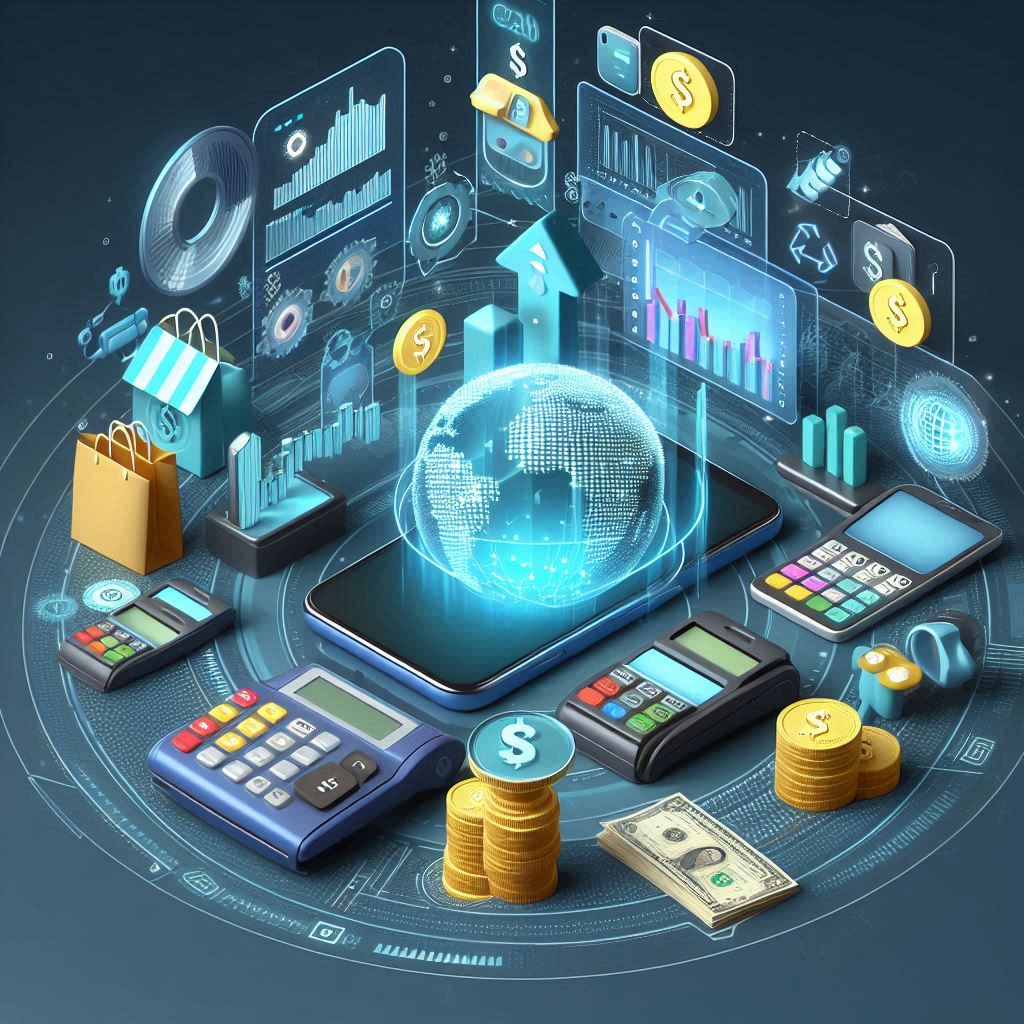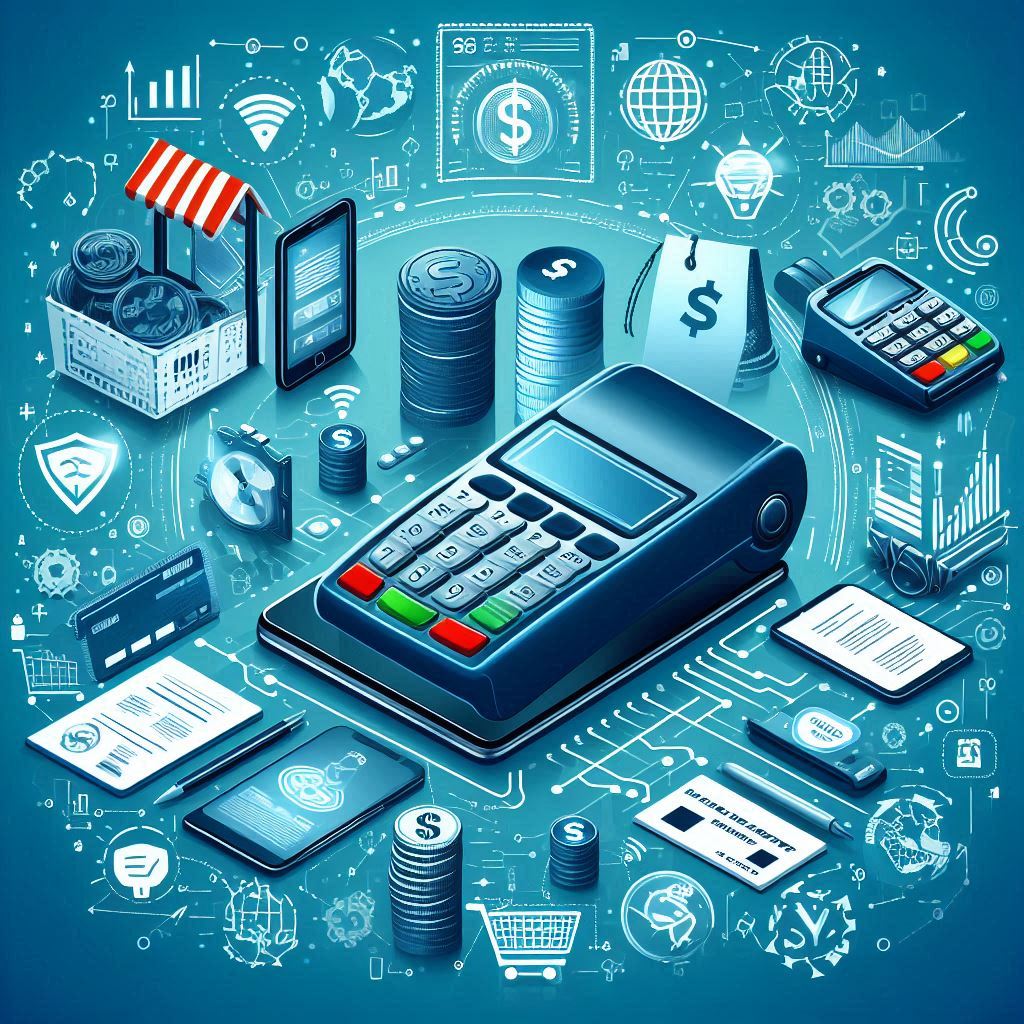Introduction
In today’s fast-paced world, mobile payments have revolutionized the way we shop and conduct transactions. With the rapid growth of e-commerce, understanding the impact of mobile payments is crucial for businesses and consumers alike. This article delves into the evolution, current trends, and future of mobile payments, exploring how they are reshaping the landscape of electronic commerce.
E-commerce has grown exponentially over the last decade, and a significant contributor to this growth is the advent of mobile payments. As smartphones become increasingly integral to our daily lives, the ability to make payments via mobile devices has introduced a new level of convenience and efficiency. This shift not only benefits consumers but also presents vast opportunities and challenges for businesses aiming to stay competitive in a digital economy.

The Evolution of Mobile Payments
Mobile payments have come a long way from their humble beginnings. Initially, they were limited to text message transactions and simple peer-to-peer payments. However, technological advancements have significantly expanded their capabilities. The introduction of smartphones and the development of secure payment gateways have propelled mobile payments into the mainstream.
Early Days of Mobile Payments
In the early days, mobile payments were primarily conducted through SMS services, which allowed users to transfer small amounts of money. This method, while innovative at the time, was slow and lacked security features. Mobile carriers played a pivotal role in facilitating these transactions, which laid the foundation for more sophisticated systems.
Technological Advancements
The real transformation began with the advent of smartphones and the development of advanced payment gateways. Technologies such as Near Field Communication (NFC), QR codes, and mobile wallet apps revolutionized the way we make payments. These innovations not only enhanced the speed and convenience of transactions but also improved security measures, making mobile payments a viable alternative to traditional methods.
Current Trends in Mobile Payments
Mobile payments have seen a surge in popularity, driven by the proliferation of smartphones and the increasing demand for convenience. Let’s explore some of the current trends shaping this dynamic field.
Increasing Popularity
The rise in mobile payment usage is evident worldwide. Consumers are increasingly relying on their smartphones for daily transactions, driven by the convenience and speed they offer. According to recent studies, the global mobile payment market is expected to grow significantly in the coming years, indicating a shift in consumer behavior towards digital payments.
Mobile Wallets
Mobile wallets, such as Apple Pay, Google Wallet, and Samsung Pay, have become ubiquitous. These digital wallets store payment information securely, allowing users to make transactions with just a tap of their phone. The integration of loyalty programs and reward points within these wallets further incentivizes their use, creating a seamless shopping experience.
Contactless Payments
Contactless payments, which use Near Field Communication (NFC) technology, have gained traction. This method allows users to make quick and secure payments by simply tapping their phone on a payment terminal. The COVID-19 pandemic has accelerated the adoption of contactless payments, as consumers and businesses alike seek safer, touch-free transaction methods.
Cryptocurrency Integration
Cryptocurrency is gradually making its way into the mobile payment ecosystem. Platforms like BitPay and Coinbase enable users to pay with Bitcoin and other cryptocurrencies, offering a new level of flexibility. This integration opens up new possibilities for cross-border transactions and financial inclusion, particularly in regions with limited access to traditional banking services.
Impact on Consumer Behavior
Mobile payments have significantly influenced consumer behavior, altering the way we shop and manage our finances.
Convenience and Speed
Mobile payments offer unparalleled convenience. Consumers can make purchases anytime, anywhere, without the need for cash or cards. This has led to a significant shift in shopping habits, with more people opting for online and mobile transactions. The ability to pay with a simple tap or scan has made the checkout process faster and more efficient, reducing wait times and enhancing the overall shopping experience.
Security Concerns and Solutions
Despite their convenience, mobile payments have faced scrutiny over security issues. However, advancements in encryption and biometric authentication have addressed many of these concerns, making mobile payments more secure than ever. Features like fingerprint scanning, facial recognition, and tokenization ensure that sensitive information is protected, building consumer confidence in using mobile payment systems.
Changing Shopping Habits
The ease of mobile payments has changed the way people shop. Impulse buying has increased, and consumers are more likely to make small, frequent purchases. This shift has profound implications for retailers, who must adapt their strategies to meet changing consumer behavior. Mobile payments also enable more personalized shopping experiences, as businesses can collect and analyze data to tailor their offerings to individual preferences.

Impact on Businesses
The adoption of mobile payments has had a profound impact on businesses, offering both opportunities and challenges.
Increased Sales and Customer Retention
Mobile payments can boost sales and improve customer retention. The seamless transaction process enhances the shopping experience, encouraging repeat business. Businesses that offer mobile payment options can attract tech-savvy customers who prefer the convenience of digital transactions. Additionally, mobile payment systems often integrate with loyalty programs, further incentivizing repeat purchases and fostering customer loyalty.
Reduced Transaction Costs
Businesses can also benefit from lower transaction costs. Mobile payments often come with lower processing fees compared to traditional credit card transactions, saving businesses money in the long run. Furthermore, the automation of payment processes can reduce administrative overheads, allowing businesses to allocate resources more efficiently.
Enhanced Customer Experience
By offering mobile payment options, businesses can provide a more convenient and personalized shopping experience. This can lead to increased customer satisfaction and loyalty. Mobile payments enable faster checkouts, reduce the need for physical cash handling, and minimize errors associated with manual entry. Moreover, businesses can leverage data collected through mobile payments to gain insights into customer preferences and behavior, allowing for more targeted marketing and product offerings.
Challenges in Mobile Payments
While mobile payments offer numerous benefits, they also present certain challenges that need to be addressed.
Security Risks
While security has improved, risks still exist. Cybersecurity threats, such as phishing and hacking, remain a concern. Businesses and consumers must stay vigilant and adopt best practices to mitigate these risks. Implementing robust security measures, such as multi-factor authentication and real-time transaction monitoring, can help protect against fraudulent activities.
Technological Barriers
Not all consumers have access to the latest technology, which can limit the adoption of mobile payments. Additionally, businesses need to invest in compatible payment systems, which can be costly. Ensuring compatibility across various devices and platforms is crucial to providing a seamless user experience. Moreover, educating consumers about the benefits and security of mobile payments can help overcome resistance to adoption.
Regulatory Issues
The regulatory landscape for mobile payments is complex and varies by region. Compliance with these regulations is essential for businesses to avoid legal complications. Navigating different regulatory requirements, such as data protection laws and anti-money laundering regulations, can be challenging. Businesses must stay informed about regulatory changes and work closely with legal experts to ensure compliance.
The Role of Fintech Companies
Fintech companies play a crucial role in driving innovation and shaping the future of mobile payments.
Innovations and Disruptions
Fintech companies are at the forefront of mobile payment innovations. They are developing new technologies and platforms that disrupt traditional payment systems, offering more efficient and user-friendly solutions. From blockchain-based payment systems to AI-driven fraud detection, fintech companies are pushing the boundaries of what is possible in the realm of digital payments.
Collaboration with Traditional Banks
Many fintech companies are partnering with traditional banks to expand their reach and offer integrated services. This collaboration benefits both parties and accelerates the adoption of mobile payments. Traditional banks bring established customer bases and regulatory expertise, while fintech companies contribute cutting-edge technology and innovative solutions. Together, they can offer comprehensive and seamless financial services to consumers and businesses.
Regional Differences
The adoption and impact of mobile payments vary significantly across different regions.
Mobile Payments in Asia
Asia leads the world in mobile payment adoption. Countries like China and India have seen explosive growth, driven by tech-savvy populations and supportive government policies. Mobile payment platforms such as Alipay and WeChat Pay dominate the market, offering a wide range of services beyond payments, including financial management and social networking. The widespread use of QR codes and the integration of mobile payments into everyday activities, such as transportation and dining, have made them an integral part of daily life in Asia.
Mobile Payments in North America
North America has also embraced mobile payments, though adoption rates vary. The presence of tech giants like Apple and Google has spurred growth in the region. Mobile wallets such as Apple Pay and Google Pay are widely accepted, and contactless payments are becoming increasingly common. However, there are still challenges to overcome, such as ensuring widespread acceptance among smaller merchants and addressing security concerns.
Mobile Payments in Europe
Europe presents a mixed picture, with some countries adopting mobile payments rapidly while others lag behind. Regulatory frameworks and consumer preferences play a significant role in this variation. Countries like Sweden and the UK have seen high adoption rates, driven by the popularity of mobile banking apps and contactless payment systems. In contrast, some Southern and Eastern European countries have been slower to adopt mobile payments due to factors such as lower smartphone penetration and cultural preferences for cash transactions.
Future of Mobile Payments
The future of mobile payments looks promising, with emerging technologies and trends poised to further revolutionize the industry.
Emerging Technologies
The future of mobile payments looks promising, with emerging technologies like 5G and blockchain set to revolutionize the industry. These technologies promise faster, more secure, and more efficient transactions. 5G networks will enable real-time payment processing and support advanced applications, such as augmented reality shopping experiences. Blockchain technology offers the potential for decentralized and transparent payment systems, reducing reliance on intermediaries and enhancing security.

Predictive Analytics
Predictive analytics will enable businesses to understand consumer behavior better and offer personalized experiences. This can lead to increased sales and customer satisfaction. By analyzing transaction data and customer interactions, businesses can anticipate consumer needs, recommend relevant products, and optimize marketing campaigns. Predictive analytics can also help identify potential fraud and mitigate risks, further enhancing the security of mobile payments.
Blockchain and Decentralized Finance
Blockchain technology and decentralized finance (DeFi) are poised to transform mobile payments. They offer greater transparency, security, and efficiency, potentially replacing traditional financial systems. Blockchain can facilitate peer-to-peer transactions without the need for intermediaries, reducing costs and increasing transaction speed. DeFi platforms provide innovative financial services, such as lending and asset management, accessible to anyone with a mobile device and internet connection.
Case Studies
Examining real-world examples of companies successfully adopting mobile payments provides valuable insights.
Success Stories of Companies Adopting Mobile Payments
Several companies have successfully integrated mobile payments, resulting in increased sales and customer loyalty. For example, Starbucks’ mobile app has become a model for integrating payments and customer engagement. The app allows customers to order ahead, earn rewards, and make payments seamlessly, resulting in a highly personalized and convenient experience. Other success stories include ride-sharing platforms like Uber and Lyft, which have revolutionized transportation by integrating mobile payments into their apps, making transactions effortless for both drivers and passengers.
Lessons Learned
These success stories offer valuable lessons for other businesses. Key takeaways include the importance of user-friendly interfaces, robust security measures, and effective marketing strategies. Businesses should prioritize simplicity and ease of use in their mobile payment systems to encourage adoption. Additionally, investing in advanced security technologies and educating customers about safety measures can help build trust. Effective marketing campaigns that highlight the benefits and convenience of mobile payments can further drive user engagement.
Consumer Trust and Adoption
Building consumer trust is crucial for the widespread adoption of mobile payments.
Building Trust in Mobile Payment Systems
Building trust is crucial for the widespread adoption of mobile payments. Transparent practices, strong security measures, and responsive customer support can help build consumer confidence. Businesses should clearly communicate how they protect customer data and address any security concerns. Providing prompt and helpful customer support can also enhance trust and encourage users to embrace mobile payments.
Marketing Strategies for Adoption
Effective marketing strategies are essential to encourage adoption. Highlighting the convenience, security, and benefits of mobile payments can persuade consumers to make the switch. Utilizing social media, influencer partnerships, and targeted advertising can reach a broader audience and generate interest. Offering incentives, such as discounts or rewards for using mobile payments, can further motivate consumers to adopt this payment method.
Integration with Other Technologies
Mobile payments can be further enhanced by integrating with other emerging technologies.
IoT and Smart Devices
The Internet of Things (IoT) and smart devices are set to enhance mobile payments further. From smartwatches to connected cars, these devices offer new opportunities for seamless transactions. For example, wearable devices equipped with payment capabilities allow users to make purchases without needing their smartphones. Connected appliances, such as smart refrigerators, can facilitate automated grocery purchases, streamlining the shopping experience.
Artificial Intelligence
Artificial Intelligence (AI) can optimize mobile payment systems by detecting fraud, personalizing user experiences, and automating processes. This leads to improved security and efficiency. AI algorithms can analyze transaction patterns and identify suspicious activities in real-time, preventing fraudulent transactions. Personalized recommendations and tailored offers based on user behavior can enhance customer satisfaction and drive sales. Automation of routine tasks, such as payment processing and customer support, can reduce operational costs and improve efficiency.

